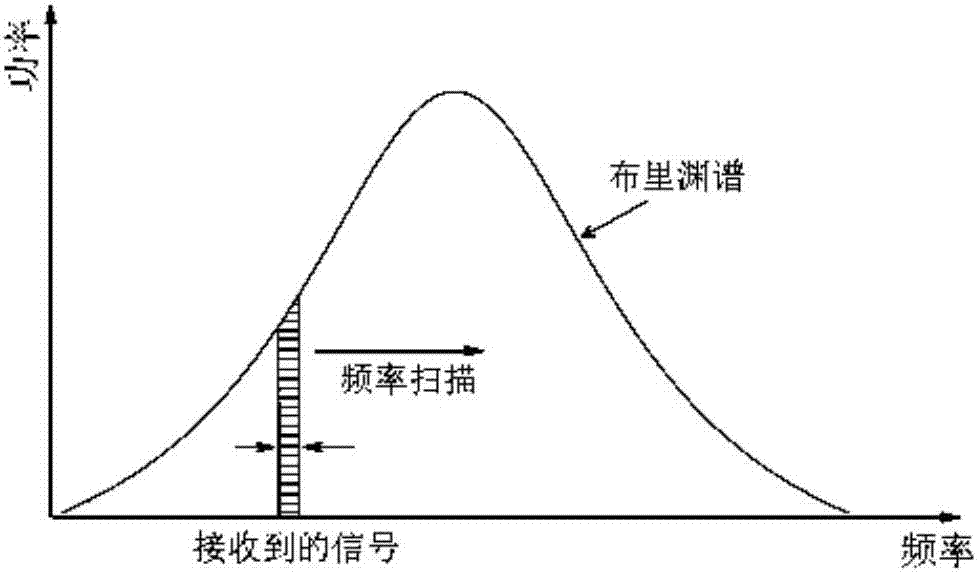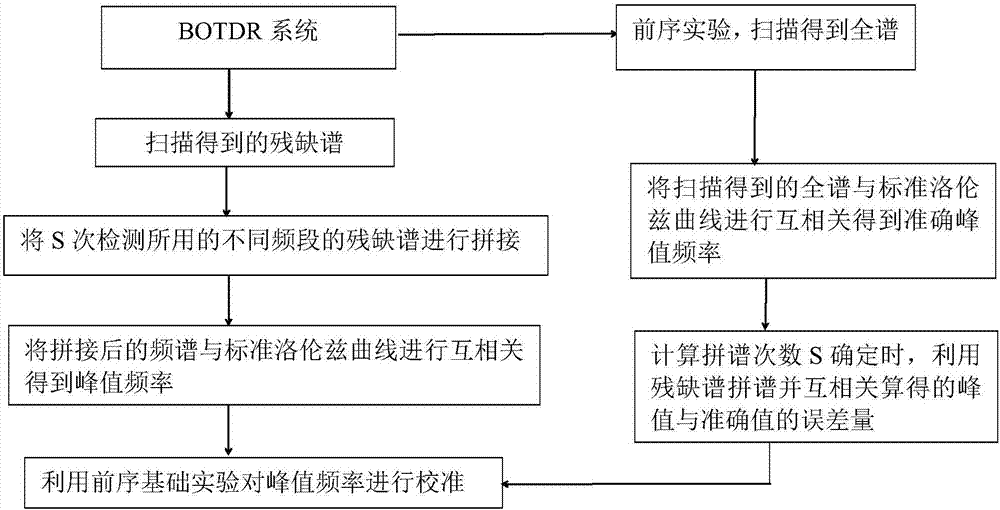BOTDR cross-correlation peak finding method based on defective spectrum splicing
A cross-correlation and incomplete technology, applied in the field of BOTDR peak-seeking technology, can solve the problem of not being able to obtain the strain information along the high-speed rail, and achieve the effect of making up for insensitivity and improving the sensing effect
- Summary
- Abstract
- Description
- Claims
- Application Information
AI Technical Summary
Problems solved by technology
Method used
Image
Examples
Embodiment Construction
[0037] The technical solutions of the present invention will be described in further detail below in conjunction with the accompanying drawings. The implementations described with reference to the accompanying drawings are exemplary and are only used to explain the present invention, rather than to limit the present invention.
[0038] The invention obtains the real Brillouin spectrum peak frequency by combining the obtained incomplete spectrum and performing cross-correlation calculation with the standard Lorentz curve under the condition of constant sweep frequency. At the same time, through the pre-order experiment, on the basis of meeting the error range required by the actual application, determine the number of spectrum spelling and optimize the peak-finding efficiency.
[0039] It is known that the Brillouin spectrum is in the form of a Lorenz curve, and its expression is:
[0040]
[0041] In the formula, Ω is the angular frequency; g p is the peak Brillouin gain; ...
PUM
 Login to View More
Login to View More Abstract
Description
Claims
Application Information
 Login to View More
Login to View More - R&D
- Intellectual Property
- Life Sciences
- Materials
- Tech Scout
- Unparalleled Data Quality
- Higher Quality Content
- 60% Fewer Hallucinations
Browse by: Latest US Patents, China's latest patents, Technical Efficacy Thesaurus, Application Domain, Technology Topic, Popular Technical Reports.
© 2025 PatSnap. All rights reserved.Legal|Privacy policy|Modern Slavery Act Transparency Statement|Sitemap|About US| Contact US: help@patsnap.com



